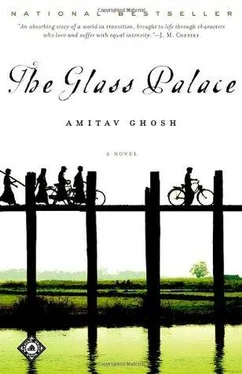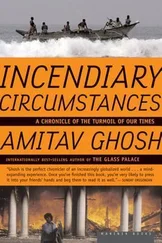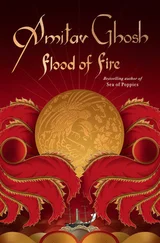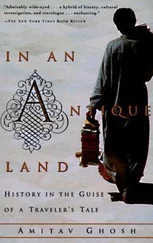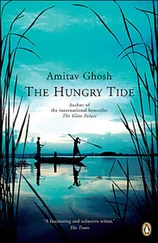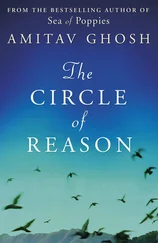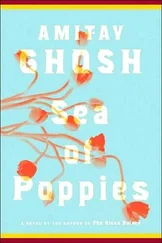Shortly afterwards a steward took Manju and Neel on a tour of the plane. They went straight through to the navigating bridge, where the captain and the first officer sat side by side, behind identical controls. The first officer explained that the Calcutta — Rangoon flight was only one leg of a fortnightly, eleven-thousand-mile round trip that took the Centaurus from Southampton to Sydney and back.
Behind the bridge lay the cabins of the main deck. There was an area for the stewards, a midship cabin, a smoking cabin and a promenade deck — an area that was kept free of seats, so that passengers could stretch their legs in mid-flight. Well appointed as everything was, it was the ingenious design of the kitchen and pantry that took Manju’s breath away. In an area that was no larger than the average closet, space had somehow been found for all the amenities of a first-rate restaurant — crockery, linen, silverware and even fresh flowers.
With dawn approaching the steward advised Manju and Neel to go to the promenade deck to watch the sunrise. They stepped through the arched entrance just in time to see the dark expanse of the Sunderbans yielding to the metallic glint of the Bay of Bengal. In the distance a sliver of colour had appeared on the horizon, like light leaking through a doorway. The dark skies turned quickly mauve and then a shimmering translucent green, shot with streaks of crimson and yellow.
While Dinu was attempting to photograph the sunrise, Manju and Neel crossed the aisle to look in the other direction. Manju cried out loud: to the west lay a stupefying view. The horizon was obscured by a mass of darkness, a bank of cloud that was as vast as a mountain range. It was as though the Himalayas had been magically transported across the sea. So heavy were the cloudbanks that their flat bottoms seemed almost to touch the waves while their peaks towered far, far above the plane — great Everests of cloud reaching tens of thousands of feet into the sky.
‘The monsoons,’ Neel said incredulously. ‘We’ve run straight into the incoming rains.’
‘Is it going to be dangerous?’ Manju asked.
‘In some other aircraft perhaps,’ Neel said confidently. ‘But not in this one.’
They went back to their seats and soon sheets of rain were whiplashing against the windows with a force that made Manju flinch from the glass. Yet, the starkly visible violence of the weather had almost no effect upon the plane — the speedometer in the cabin showed the Centaurus to be flying at a steady 200 miles per hour. But a while later the captain announced that the Centaurus would make a change of altitude to ride out the storm. It would descend from its present cruising height of 3,000 feet to a few hundred feet above sea level.
Manju fell into a doze and was jolted awake only when a ripple of excitement ran through the plane. Land had been spotted on the starboard side: a picture-book island ringed with beaches. Huge waves were disintegrating into sheets of white foam on the sand. At the centre of the island there stood a striped black and white tower.
‘Ladies and gentlemen,’ the captain announced, ‘what we have here is the lighthouse of Oyster Reef. You should have your first glimpse of Burma very shortly. Watch out for the Arakan coast. .’
Then there it was — close enough to touch — a densely clotted carpet of mangrove, veined with thin creeks and silver rivulets. As Manju sat looking through the window, Neel whispered into her ear, telling her the story of how his grandmother— Rajkumar’s mother — had died somewhere below, on a sampan that was moored in one of those branching inlets.
The town of Akyab, the capital of the Arakan, was their first stop. ‘This,’ said Neel proudly, ‘was where my father was born.’ The airline’s base lay in a natural sea-lane, a good distance from the town. All they saw of Akyab as the Centaurus came down was a clock-tower in the far distance. After a quick refuelling the plane was in the air again. The rain stopped and in the bright daylight the waters of the coast were revealed to be lined with miles of reef and great floating forests of seaweed — all clearly visible from above, as stains on the sparkling sea. Rangoon now lay due east, and the Centaurus soon turned inland, flying over a stretch of uninhabited countryside. The steward came by, handing out voluminous leather-bound menus.
At the end of her breakfast, Manju found herself looking down on a vista of square paddy fields. Some were already green and others were in the process of becoming so, with lines of workers advancing through the mud, transplanting seedlings. The workers stood up as the plane flew over, throwing their heads back and waving huge conical hats.
Manju caught sight of a river, curving across the landscape. ‘Is that the Irrawaddy?’ she asked Neel.
‘No,’ said Neel. ‘That’s the Rangoon river — the Irrawaddy doesn’t flow past the city.’
Then a glint of sunlight drew her eye to an immense structure, far in the distance — a gilded mountain that tapered into a spire of gold. ‘What’s that?’
‘That’s the Shwe Dagon Pagoda,’ Neel whispered in her ear. ‘We’re home.’
Manju glanced at her watch and saw that the journey had lasted exactly five and a half hours. It seemed impossible that less than a day had passed since her wedding night, since the time when Neel had shut the door of their flower-bedecked bedroom. She thought of how frightened she’d been and she wanted to laugh. It was only now, circling above the city that was to be her home, that she acknowledged how completely she was in love. He was her present, her future, the entirety of her existence. Time and being held no meaning without him. She slipped her hand into his and looked down again on the great muddy river and the spire of gold. ‘Yes,’ she said. ‘I’m home.’

Manju and Neel had not been married quite three months when the British Prime Minister, Neville Chamberlain, declared war on Germany, on behalf of Britain and her Empire. With the start of the war, an Air Raid Precautions scheme was prepared for Rangoon. The city was divided into sections and an ARP committee was formed for each. Medical officers were taught to deal with gas injuries; wardens were shown how to identify incendiary bombs; fire-fighting parties were formed and first-aid centres were set up. Rangoon’s water table was too high to allow the building of underground shelters, but slit trenches were dug at strategic points around the city. Periodically there were ‘blackouts’; trains entered and left the Rangoon railway station with darkened windows; wardens and civic guards stayed on duty through the night.
There was nothing unsatisfactory about the conduct of these exercises: the city’s inhabitants followed their instructions good-humouredly and disturbances were few. But there was no denying the fact that a Rangoon blackout had more the feel of a performance than a drill: the public seemed to be going through the motions without being persuaded either of the imminence of war, or of its possible bearing on their lives. Certainly, in Burma, as in India, public opinion was deeply divided: in both places many important personages had expressed their support of the colonial Government. But many could also be heard to voice bitter condemnation of Britain’s declaration of war on their behalf, without any binding guarantees of eventual independence. The mood among Burma’s student activists was summed up in a slogan coined by a charismatic young student leader, Aung San: Colonialism’s difficulty, he said, was Freedom’s opportunity. One day, Aung San disappeared: a rumour circulated that he was on his way to China to seek the support of the Communists. Later it came to be known that he had gone instead to Japan.
Читать дальше
Конец ознакомительного отрывка
Купить книгу
